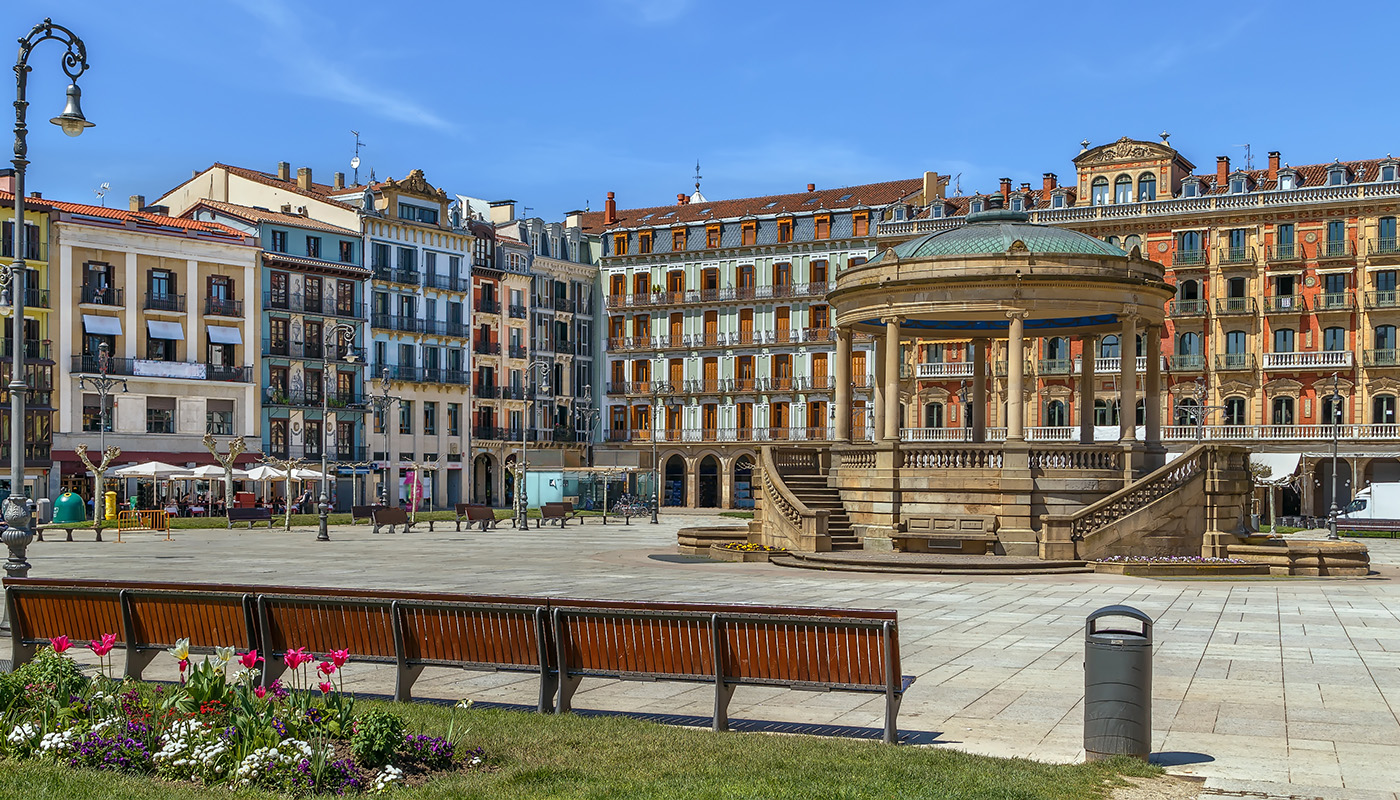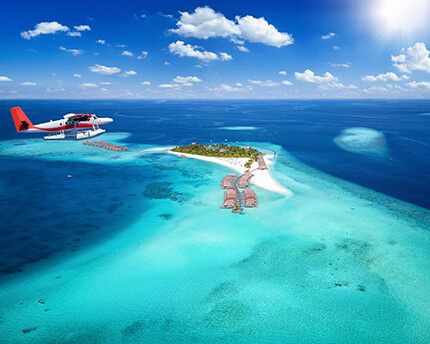Malé is the capital of the Maldives but covers an area that is less than six square kilometres; visiting the city reveals the pace and essence of life for the inhabitants of these heavenly islands in the Indian Ocean. In fact, Malé has over 133,000 inhabitants and is one of the most densely populated cities in the world. However, it’s well worth exploring its streets, markets, typical street food stalls and Grand Friday Mosque to truly appreciate that, despite what life is like in the big hotels and resorts, the Maldives is a Muslim country.
Fish Market and local markets
The Fish Market is a fantastic place to soak up the city’s vibrant sense of life. A quick warning though ‒ the smell here isn’t exactly fragrant, so be prepared.
During your visit you’ll see stalls covered in buckets containing freshly caught fish, and even fish in rows on plastic on the floor.
It’s one of the most popular places in Malé and where Maldivians go to buy the freshest possible fish, the food that forms the basis of their diet. Species on sale include tuna, octopus, and much more.

You won’t spot any local women during your visit to the market because it’s a place for men only, but female tourists are welcome.
The local market is close by in Ibrahim Hassan Didi Magu, and here you’ll find a labyrinth of fruit and vegetable stalls that are an eye-catching riot of incredible colours. It’s the perfect place to buy local produce from the Maldives.
Artificial beach
Despite being the capital of countless idyllic islands with crystal-clear waters, Malé didn’t originally have its own beach. To rectify this, it built an artificial beach in the east of the island where people can stroll along the sand, have a drink, and catch up with friends and family.
The artificial beach has become an increasingly popular meeting place for Maldivians but isn’t the best place to go swimming. In fact, swimming in a bikini is banned by Muslim law and you have to wear shorts and a T-shirt to swim here. Instead, it’s a great place to get some fresh air, enjoy beautiful sunsets and do different activities such as water sports.
Islamic Centre and Grand Friday Mosque
The Maldives has been a Muslim country since the 12th century when it was ruled by the first sultan. However, Maldivians followed more flexible customs until the 1990s when a stricter, more orthodox approach to Islam was introduced. The Islamic Centre and Grand Friday Mosque was built in 1984 and financed by money from several Gulf States (Pakistan, Brunei and Malasia). It’s a spectacular place, especially its golden dome, and it stands next to the most important square in Malé, Jumhooree Maidan.

The white marble façade has become a symbol of the city and the mosque can hold up to 5,000 believers. It can be visited outside of prayer time provided you are dressed appropriately: long trousers for men, and a skirt or long dress for women.
The Grand Friday Mosque is far from being the only mosque in Malé and you should also visit some of the older mosques in the city.
The National Museum
The National Museum is the best place to find out about the history and culture of the Maldives as a society, looking beyond the paradise where its people live. It only takes a couple of hours to visit and it’s fascinating to see how it transformed from being a Buddhist country to the Muslim nation it is today, and all the resulting changes.
The museum is in Sultan Park, gardens that were originally private and belonged to the royal family’s palace. Today they are one of the most popular places for Malé locals to meet for a chat, take a stroll and sunbathe.
Local food
Malé is the ideal place to sample some local Maldivian food because the city’s street food stalls sell the dishes that local people who live in these tropical islands typically eat.
Maldivian cuisine is mainly based around fish, which is combined with vegetables and sometimes a dash of spice. Mas huni is the most typical dish ‒ it contains tuna, onion, coconut and chilli and is eaten with roshi, a special type of bread, and tea, because alcohol is banned across the country and is only served in international hotels.
Gulha is a popular type of fried fish meatball with lime and chilli that is similar to theluli kavabuu, which are like fried fish croquettes, and bis keemiya, parcels that are similar to Indian samosas and are stuffed with dried fish, lentils, potatoes, peas and curry.
Local restaurants also have lobster, served with a drizzle of lime, rice, noodles, and you’ll even find a strange type of palm wine called raa that is just 4% ABV.
Other activities and places of interest
Despite being a small island, Malé has lots of fascinating spots that are essential to see because they’re historically important or have a particularly emotional meaning. A recent example is the 2004 Tsunami Monument, a reminder of the natural disaster that also hit the Maldives with over 100 victims who died or disappeared.

The monument in their memory is made of ascending steel balls that symbolise the 20 atolls in the Maldives and the rising sea. It also features engraved rods with the name of each victim.
Important historical buildings in Malé include its coral mosques, buildings that are named after the material from which they were constructed.
The oldest coral stone mosque dates from 1656 and is decorated with inscriptions from the Qur’an; there is a white and blue tower attached to the mosque that serves as a minaret. It can only be visited with an official permit from the Ministry of Islamic Affairs, but this is not difficult to obtain if you are conservatively dressed and polite.
Surprisingly, there is a cemetery behind the mosque full of tombstones; if the tombstones are semi-circular in shape, they are women’s graves, and if they are pointed, they are men’s. Keep your eyes peeled when you visit the cemetery because some of the tombs have golden letters engraved in the stone: these are the tombs of sultans.
Hotels in the Maldives
The Maldives has a wide range of accommodation options, but the Barceló Whale Lagoon Maldives in South Ari Atoll has one of the best locations for an unforgettable experience that has it all.
Its white sand beach and turquoise waters offer guests the classic image of the Maldives as they enjoy the comfort and attention to detail of its 100 villas. 30 are Water Villas and 7 are Beach Suites with a plunge pool for total privacy.
The hotel also has three restaurants, three bars and a snack bar for enjoying a wide range of food, from buffet-style meals at Sea Salt to fusion Mediterranean cuisine at Aqua.
The resort has its own Pool Bar called Breeze where you can have a cocktail as you watch the sun go down from the beach club. And if swimming pools are your thing, Barceló Whale Lagoon Maldives has two infinity pools ‒ one with views of Ari Atoll ‒ that are perfect for relaxing throughout the day.
The hotel also runs yoga and pilates classes, plus water sports including surfing, snorkelling and scuba diving. Finally, the hotel’s Mandara spa offers a wide range of personalised treatments and has a well-equipped fitness room.










































































